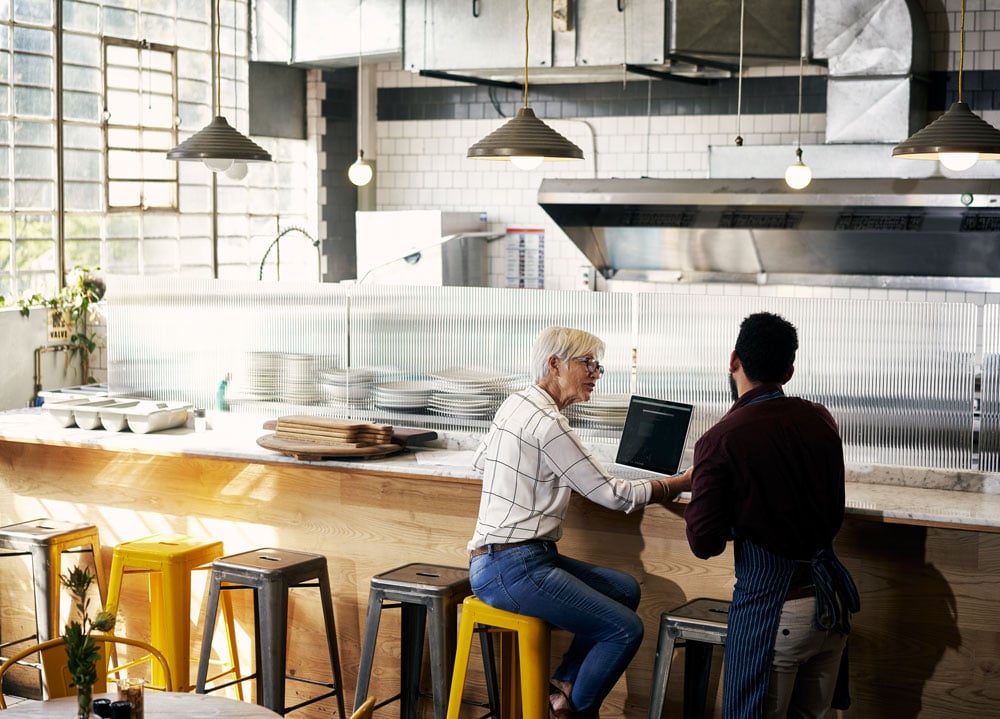
In a previous blog post, we talked about revisiting your brand promise and finding ways to review and improve it.
In this post, we’re going to look at how hyper-personalized brand experiences can engage your guests and get them thinking that your venue is the only one worth coming back to time-after-time.
Defining hyper-personalization
Personalization is about understanding your guests’ preferences and tailoring their experience to meet their needs. But often this leads to broad stroke guesses from your teams on what guests want.
Without realizing it you may be separating guests into categories that aren’t applicable to their age group or food preferences. It’s a rough, throwing a dart at the dart board while wearing a blindfold technique, with just as much guarantee of success.
Hyper-personalization is about collecting enough information about a customer that you can address their individual needs and requests.
This could be as complex as having collected their guest sentiment feedback over a couple of months and knowing their food preferences, to your server asking their name and using it at every interaction.
That’s the beauty of using tech as an enhancement of the unique brand experience your teams bring, that we discussed in the previous post.
Collecting guest information
The first step in personalizing your guest experience is to collect that guest information we mentioned above. This can include anything from their name and contact information to their favorite lunchtime meal.
Collecting this information can help you tailor your services to meet their needs and create a more memorable experience.
While personalization can have an incredibly engaging impact on the brand experience during a busy shift, afterwards the marketing team can use the data that guest sentiment feedback provides.
As Jess Orton, head of customer success at Yumpingo says,
“A hot topic within hospitality marketing for quite some time now is personalization and the ability to really optimize the journey for the customer and take them through a personalized experience. And we’re past the stage of just being able to send an email that just so happens to have your first name or last name or whatever it may be on it.”
It’s got to be more than that. [You have to] really understand what drives your customer’s behavior; why they purchased, what they purchased, and why they liked, what they liked… That’s invaluable, to be able to create those optimized, personalized experiences for marketing teams.
As well as helping you provide a hyper-personalized experience, any trends you see in your guest sentiment software could help you make changes to your menu items. After all, nationwide trends often start out with one or two customers requesting something.
How did potato skins go from a random request, to a full menu item, for example (the full story of this particular food item is complex and has a few origin stories, depending where you look)?
Use technology
Technology can be a powerful tool for personalization in the hospitality industry.
While you’ll already have a tech stack growing like a pile of shiny new menus on the entrance counter, taking a look at what best suits your own needs means talking to people who understand hospitality and can deliver that guidance to you, especially once you start thinking about capturing guest sentiment data.
If you want to talk more, drop our sales team a request and we’ll be happy to talk you through some options.
Train your staff
The power of tech and people combined. What your tech can’t do (yet) is engage customers in a casual conversation that pulls out all sorts of rich insights to personalize their experience.
Encourage your staff to engage with guests and gather information about their preferences. Get them to remember guest names and greet them warmly when they recognise them on a return visit.
Of course, this is also about staff retention strategies to maintain that brand engagement, which we’ll cover in a later blog.
This shows that you care about their experience and are committed to providing exceptional service.
Customize experiences
Another way to personalize your guest experience is to customize their experiences. For example, you can offer personalized recommendations based on their interests, offer a special amenity or personalized service that meets their needs, or provide a customized dining experience based on their dietary preferences. These small touches can make a big difference in guest satisfaction.
Follow up
Following up with guests after their visit (through marketing engagement emails – using addresses gathered during guest sentiment feedback) is another way to personalize the experience.
Ask for feedback and use it to make improvements in your business. This can help to build a positive relationship with your guests and keep them coming back.
There’s always more to improve
Hyper-personalization is key to engaging guests. By collecting guest information, using technology, training your staff, customizing experiences, and following up, you can create a memorable experience for your guests and build a loyal customer base.
Remember, it’s the little things that can make a big difference. The sooner you start unpacking what those little things are, the sooner you can start building brand loyalty and increase profits.
To find out more about how our customer experience management platform can help you personalize the guest experience – get in touch with us today!